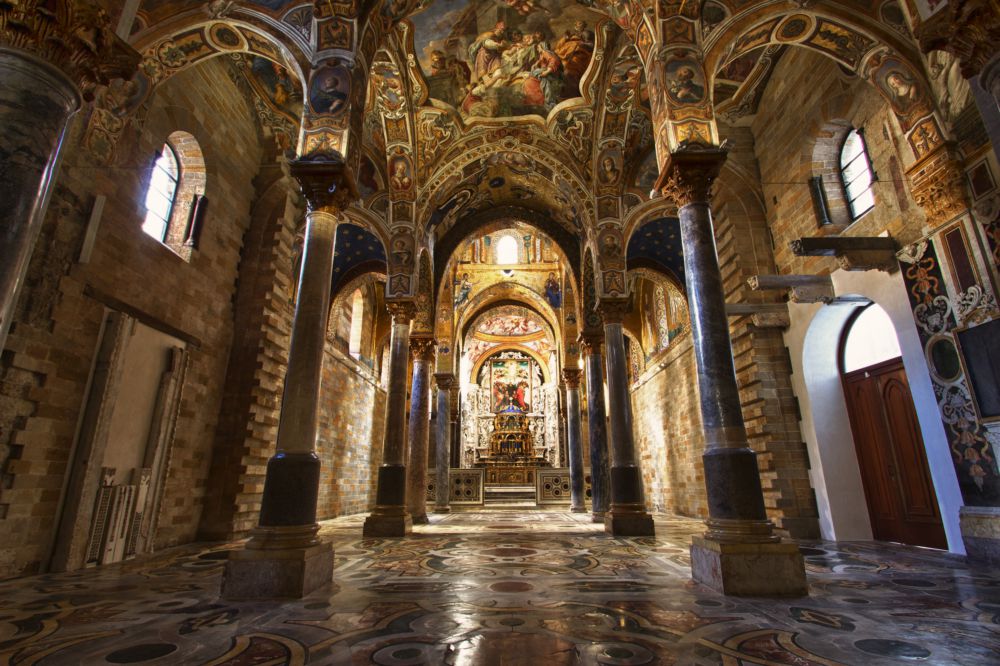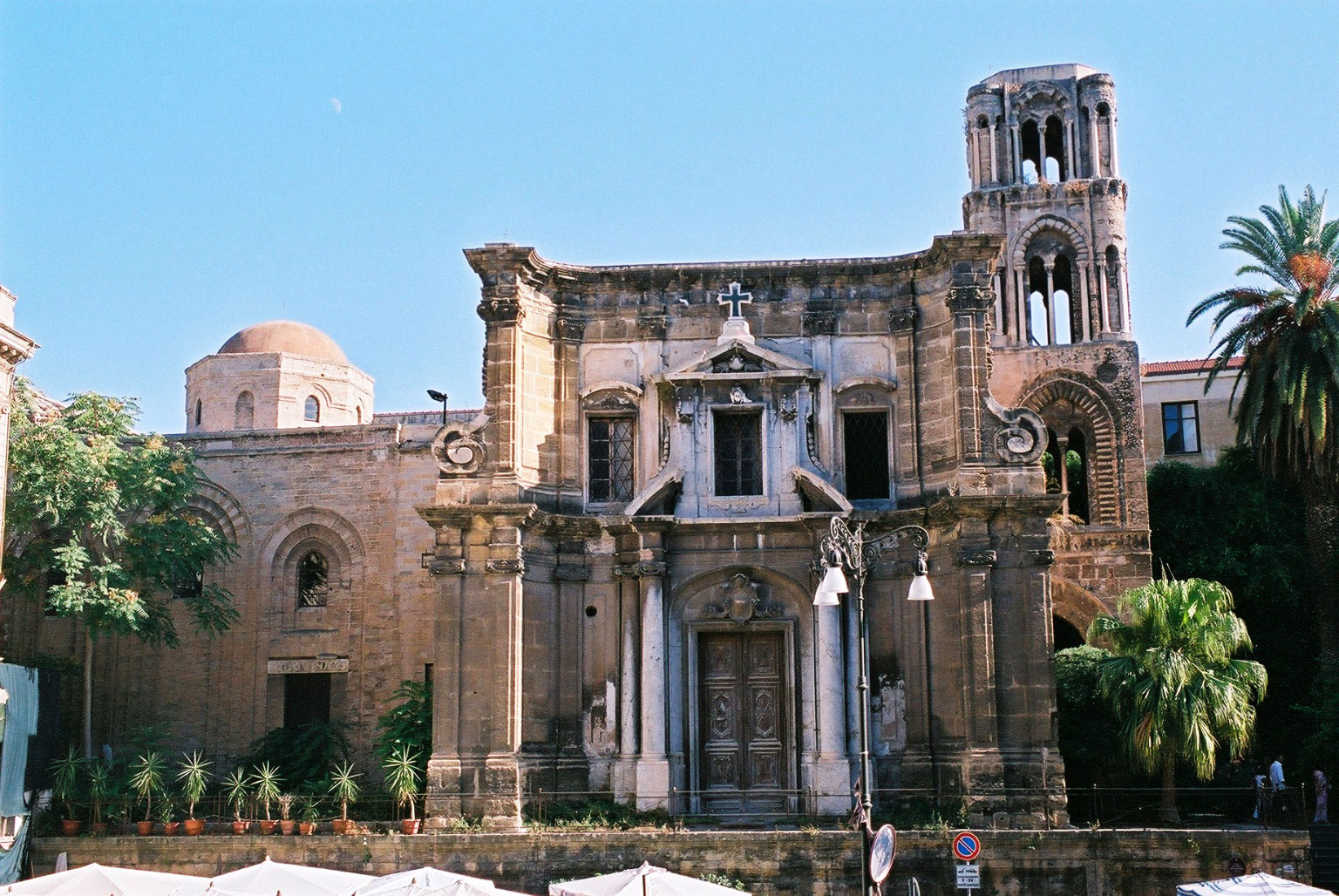Martorana
Santa Maria dell'Ammiraglio ( Holy Mary of Ammiratus ) or for Arbëresh San Nicolò dei Greci, also known as La Martorana, is a church building in Palermo. It is located near the Quattro Canti on the south side of the Piazza Bellini next to the church of San Cataldo.
History
The church was from 1143 under George of Antioch, the Ammiratus King Roger II, built as his private church and learned in the course of history many structural changes. Originally, it was built on the plan of a Greek cross with a square shape. Until the 13th century was held in the atrium of the church of the urban court. In 1435 the church was affiliated with the Benedictine monastery of Eloisia Martorana. Therefore, it also has its nickname.
As of 1588, the church received by the inclusion of the original atrium in the construction of an elongated shape. In this reconstruction, the central apse was demolished and extended to a rectangular chancel. In the 17th century the former Atrium a baroque facade at Piazza Bellini was back purposed. In a restoration in the 19th century, the medieval state was partially restored.
The bell tower, which was built on the opposite side of the church to the atrium, since the reconstruction of the 16th century, however, directly adjacent to the western facade of the church has been preserved in its lower two floors still in original condition. The upper floors have been added in the 14th century in Gothic-Catalan style.
Since 1943, La Martorana seat of the parish of San Nicolò dei Greci with Byzantine rite for all residents in Palermo Italian- Greek believers and co-cathedral of the Eparchy of Piana degli Albanesi.
Affairs
The interior of the church has three naves. The vessels are separated from each other by arches resting on columns with Corinthian capitals. The vaulted ceilings and the arches are covered with Byzantine gold ground mosaics. The iconography is based on the Byzantine liturgy. The main direction of iconography, therefore, does not go from front to back as in the Langbauten on the plan of a Latin cross, but from top to bottom.
At the highest point of the church, in the mosaic of the central dome, Jesus Christ is presented as Pantocrator. His feet are four angels in adoring position. On the sides of the octagonal tambour of the dome eight prophets are shown in the corner niches in the transition of the swift in the Vierungsquadrat the four evangelists. The vaults of the side of the crossing point eight apostles who wingtips of the transept wear medallions with images of martyrs. On the triumphal arch, the Annunciation is shown. The mosaics of the Martorane predate those of the Capella Palatina and the Cathedral of Monreale. The main altarpiece by Vincenzo degli Azani.
After the conversion from the 17th century, the apse, the former narthex and some areas of the aisles with frescoes by Antonio Grano ( 1685), Guglielmo Borremans ( 1717) and Olivio Sozzi (1744) provided. Simultaneously, the mosaics of the church founders were transferred to the former narthex. On the left, George of Antioch is shown, the prayer before the Virgin Mary throws herself to the ground, to the right of Roger II crowned by Christ himself to the king.










